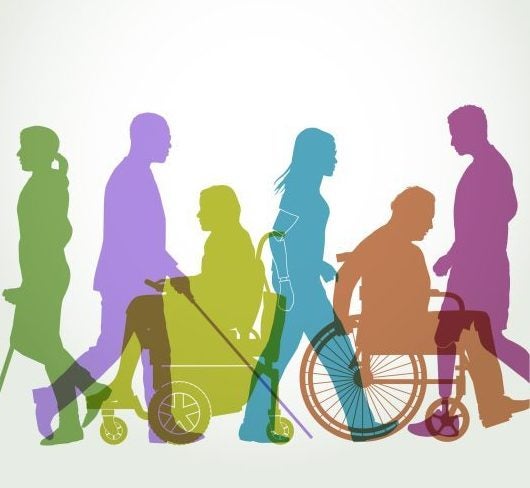
The term cyborg may conjure images of a comic book land chalked full of unimaginable futuristic technological advancement but for a growing number of disabled people, that future is now.
Although the concept of a medical cyborg most commonly fits into conversations about amputees and prosthetic or bionic technology, other groups can and do fall underneath the term’s umbrella, including those with pacemakers and ostomy bags.
This group of self-identified cyborgs are confident that their lived experience can and should have a significant impact on the medical technology industry moving forward.
Dr. Ashley Shew, an associate professor in Virginia Tech’s department of science, technology, and society, says that embracing disability identity in this way is challenging assumptions that the industry makes about what disabled people want.
“I feel that often, in the absence of knowledge about our lives and deep engagement with disability communities… people think they know what we need without talking to us,” says Shew. “Or having community engagement, or even cross disability engagement. Talking to a few newly disabled people doesn’t get you the sort of knowledge that you would need for a lot of these projects.”
According to a report by the UK Trades Union Congress (TUC), non-disabled employees earned one-sixth (17.2%) more than disabled workers in 2022 and money to create cyborg and disability-led medical technology is lacking.
Sandy Ho, director of the disability inclusion fund at Borealis Philanthropy—which has partnered with the Ford Foundation on funding to support disabled people and their projects in tech—says there are two main factors at play.
“We understand that for disabled folks, they may not necessarily see themselves in tech justice, or in [the] tech sector… and we also hear from disabled folks, very clearly, that it should not constantly be on the shoulders and responsibility of disabled people to do the labour and find a solution.”
The fund recently announced $1 million to go towards their first cohort, which includes organizations like CommunicationFIRST, who are working to create more access to augmentative and alternative communication technology (AAC). Ho says that the durable medical equipment space is another area she’s keenly aware of when it comes to disability-led innovation.
However, advocates for disability and cyborg-led innovation argue that you must know what not to do to be on the right path. The most common examples of medical technology that often draw the ire of activism-focused disabled people are products such as exoskeletons and wheelchairs that are meant to scale stairs, which researcher and writer Liz Jackson and her collaborators call ‘disability dongles.’
For engineers like product architect Laurel Lawson, who is also a disabled artist, the message that needs to be sent is that change in the industry must be structural to succeed.
“Stop thinking about the non-disabled state as the desired normal,” she says. “We’re not trying to fix disability, we’re not trying to cure a disability, we’re not trying to create a ramp that turns the disabled person into a non-disabled person. I think that [misunderstanding] is the fatal flaw at the core of the entire field. So long as there’s this mythical, normal, ideal nondisabled state – products will not be properly designed. There’s a difference between creating devices that work and creating devices that try to fix something that aren’t broken.”
Lawson points to small-scale disability-led projects places where more attention and resources can be focused on rather than on headline-grabbing exoskeletons.
For Molly Gordon, an executive coach who has been contemplating identifying as a cyborg for more than two decades, one of the benefits of the cyborg label is its ability to actively resist her local medical system’s approach to things it doesn’t understand.
“I think that the medical healthcare system in the United States has been so sanitised that it has an immediate adverse allergic reaction to anything that looks nonstandard, weird, or edgy.”
She adds that her version of a cyborg is more like an ecology or an ecosystem rather than the cold and isolated sense she got from earlier technology.
“If medical interventions, including cyborg interventions are designed from a productivity, efficiency viewpoint, I don’t want to live in that world. We have to think about the tools we create to enhance and support human life and living to support artists, dancers, veterinarians, gardeners, coaches. And instead, I think there’s this very narrow assumption that everybody can be channelled into a… sit still, hold still, job.”
The impact of identifying as disabled or as a cyborg isn’t just confined to one level of the industry, either. Dr. Liz Wilson, a behavioural scientist and founder of inclusion consultancy Include Inc. says that learning from cyborgs and other disabled people has an important impact from an organisational perspective. She believes that this knowledge must be integrated at all stages rather than just thinking about hiring disabled workers as a catch all and easily quantifiable solution.
“What gets measured gets done, right, so let’s get more diverse people in. But if you haven’t created an inclusive environment and ways of working in your organisation, you’re just giving that new diverse talent, another opportunity to have a [bad] experience at work.”
Shew says that the way in which the medical technology industry, and those who use their products in clinical settings, could reframe their understandings of their innovations is to do away with the saviour or cure narrative that so often accompanies these processes.
“It’s one thing to offer your services and knowledge. It’s another thing to think that our bodies are calling out for you.”




